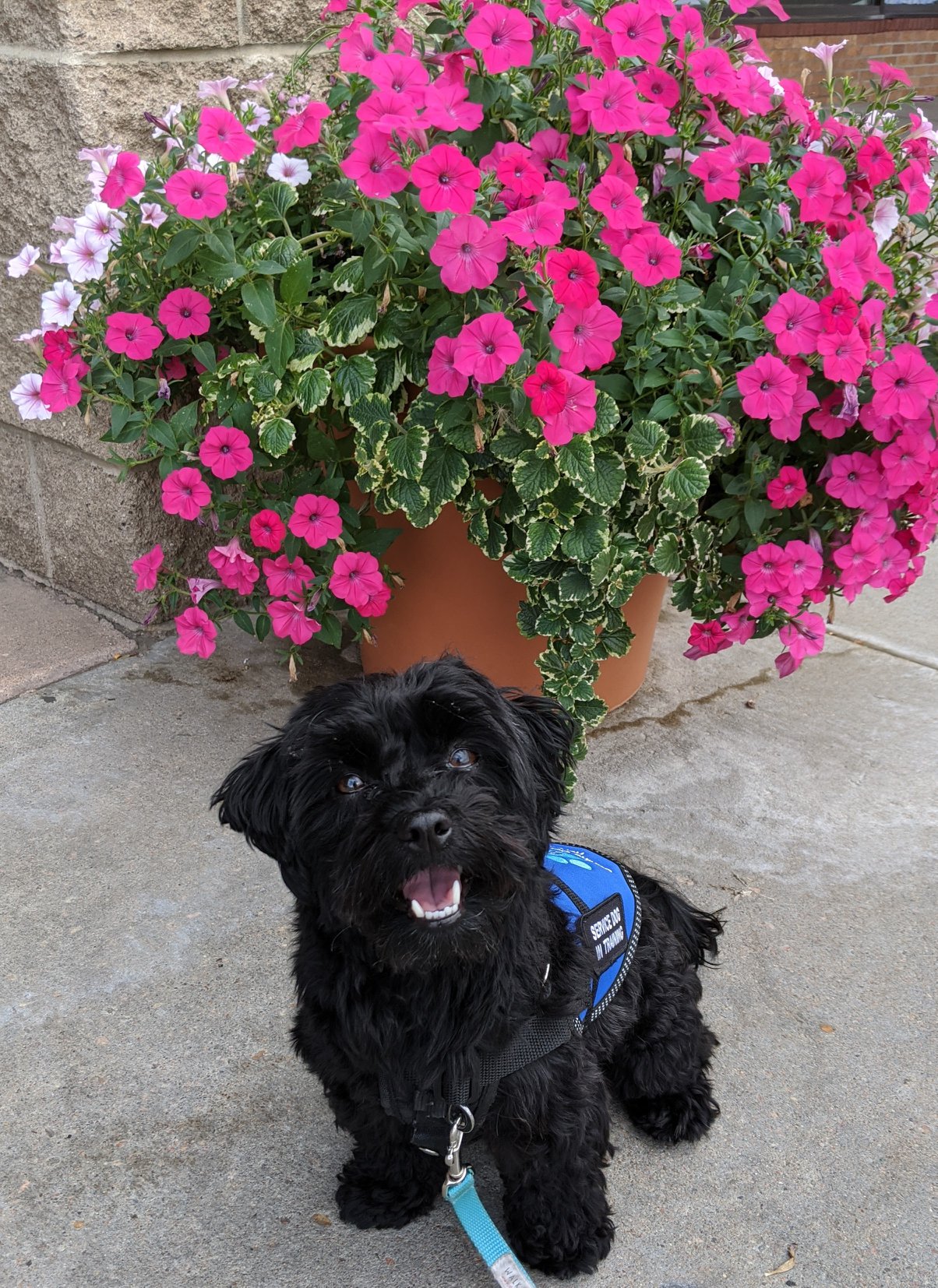Top 5 Service Dog Myths
Myth #1 Service Dogs are only for people who are blind or in wheelchairs
Service dogs can be trained to assist people with many other types of disabilities. Some disabilities are not visible such as medical and psychiatric conditions. It is impossible to recognize every type of disability that could be helped by a specially trained service dog. Some examples of invisible disabilities include but are not limited to Diabetes, Hearing Impairment, Epilepsy, and Post Traumatic Stress Disorder (PTSD).

Myth #2 Service Dogs must wear a special vest and have special identification
Most (but not all) service dogs will have a working vest, harness, or other identifying equipment as a courtesy to let the public know that the dog is working and should not be disturbed. Since it is not required by U.S. law, the absence of a working vest or identification is not illegal.
Myth #3 Its ok to pet Service Dogs if they aren’t working
Service dogs should never be disturbed even if they appear to not be working. Many jobs require the dog to monitor the environment or remain focused on their handler. Petting, calling the dog, or offering attention could put the handler at risk if the dog is distracted from its job. If in doubt, it is always courteous to ask permission before petting any dog.
Myth #4 You can always tell a “fake Service Dog” by how it looks
A service dog can be of any breed or size. Small service dogs can be used to detect allergens in the environment, alert to sounds, or provide psychiatric assistance. Extremely large breed dogs can be used to assist a person with balance and mobility support. Local laws that prohibit certain breed dogs in its jurisdiction do not apply to service dogs because they are not pets.
Myth #5 It is a health code violation to permit dogs into restaurants and healthcare facilities.
The Americans with Disabilities Act (ADA) protects the rights of individuals with disabilities to be accompanied by their service animal in the same areas that the general public is permitted including restaurants, hospital waiting rooms and patient areas. Rules and laws that pertain to pet dogs generally do not apply to service dogs because they are not pets. A few rare examples of where a service dog may not be permitted are similar to restrictions for most of the public due to a sterile environment such as hospital burn units and operating rooms. Allergies and fear of dogs are not valid reasons for denying access or refusing service to people using service animals.
Continue to About Service Dogs—–Service Dog Etiquette—–Service Dog Access Resources
